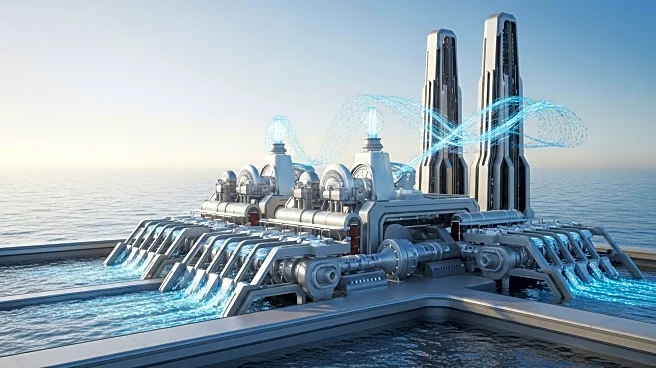Rapid Read • 8 min read
Japan has launched its first osmotic power plant in Fukuoka, marking a significant step towards utilizing saltwater as a renewable energy source. The plant uses the natural process of osmosis, where freshwater flows towards seawater through a semipermeable membrane, creating pressure that drives a turbine to generate electricity. This method is seen as a stable and continuous source of energy, unaffected by weather conditions, unlike solar or wind power. The Fukuoka plant is expected to produce 880,000 kilowatt hours annually, enough to power approximately 290 households, and will initially support a local desalination facility.
AD
The development of osmotic power plants represents a promising advancement in renewable energy technology, offering a sustainable alternative to fossil fuels. As countries seek to reduce carbon emissions and combat climate change, osmotic power could play a crucial role in diversifying energy sources and enhancing energy security. The success of Japan's plant could encourage further investment and research into osmotic power, potentially leading to broader adoption worldwide. This technology also highlights the potential for innovative solutions to address global energy challenges, contributing to a more sustainable future.
While the Fukuoka plant demonstrates the feasibility of osmotic power, further research and development are needed to overcome technical challenges, such as energy losses during water pumping and membrane efficiency. If these issues can be addressed, osmotic power could become a more viable and widespread energy solution. Japan's success may inspire other countries to explore similar projects, particularly those with abundant freshwater and seawater resources. The continued advancement of membrane and pump technologies will be critical to the scalability and economic viability of osmotic power.
The adoption of osmotic power raises important considerations regarding environmental impact and resource management. While the technology offers a low-risk alternative to fossil fuels, its implementation must be carefully managed to avoid potential ecological disruptions. Additionally, the integration of osmotic power into existing energy systems will require collaboration between governments, researchers, and industry stakeholders to ensure a balanced and sustainable approach to energy production.
AD
More Stories You Might Enjoy











